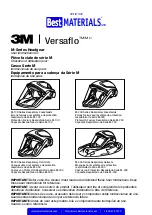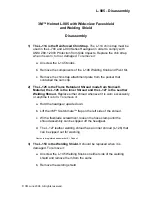
8. General information
Note: First set the appropriate active polarity of the Control Voltage
(CV) using the PIR DIP switch 1. The detector is in Night mode when
the appropriate control voltage is applied to terminal 10 and in Day mode
when the control voltage is disconnected.
A) Latching
When using multiple detectors in a single loop, wire for Day/Night and Walk
Test inputs, as shown below (repeated in figure
)
.
B) Remotely enabling/disabling the walk test LED (fig.
)
Put the detector in Day mode and enable the walk test status. The
detector’s LED will turn on as the alarm relay opens and turn off when the
relay closes. The walk test can now be carried out.
To enable the walk test LED without a remote CV input, set DIP switch 4 to
the On position. After the walk test, set DIP switch 4 to the Off position.
It is recommend that the detector is regularly walk tested and the
communication with the control panel checked.
C) Setting the alarm memory (fig.
)
In Day mode a blinking LED indicates which of the detector(s) have caused
the alarm during Night mode.
Switching back into Night mode will clear the memory and turn the LED off.
Enabling the walk test will not clear the alarm memory. Disabling the walk
test will cause the indication of memorised alarms to re-appear.
D) Selecting the coverage pattern (fig.
e
)
The coverage pattern can be changed to fit specific requirements by using
the mirror stickers (enclosed), as shown. It is recommended to blind unused
curtains that are looking at objects located very close to the detector.
CAUTION!
Removing the stickers can damage the mirror
surface!
- 16 -
Detectors
Day/Night
Walk test
Night
Day
Off
On
Control panel
CV
CV
















































